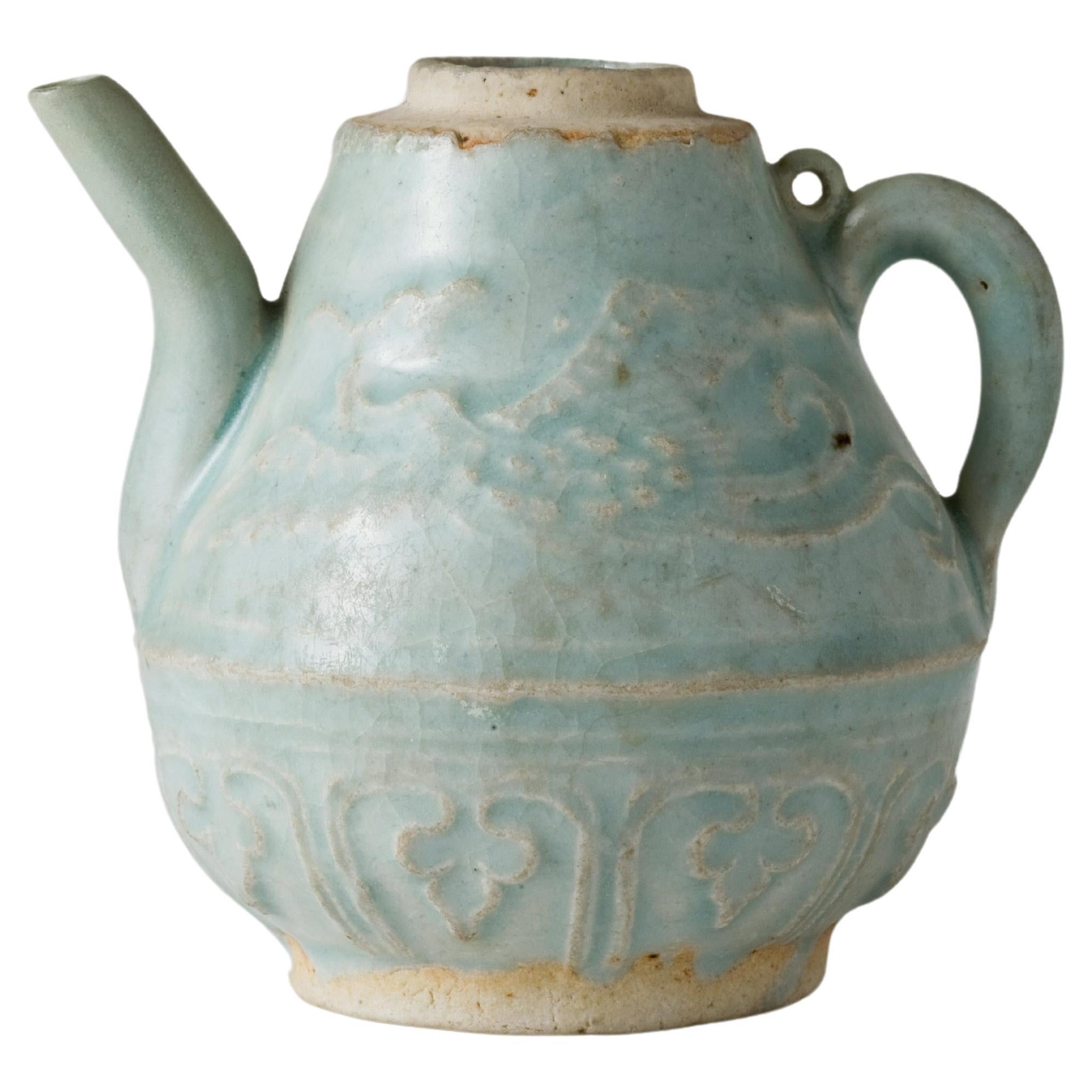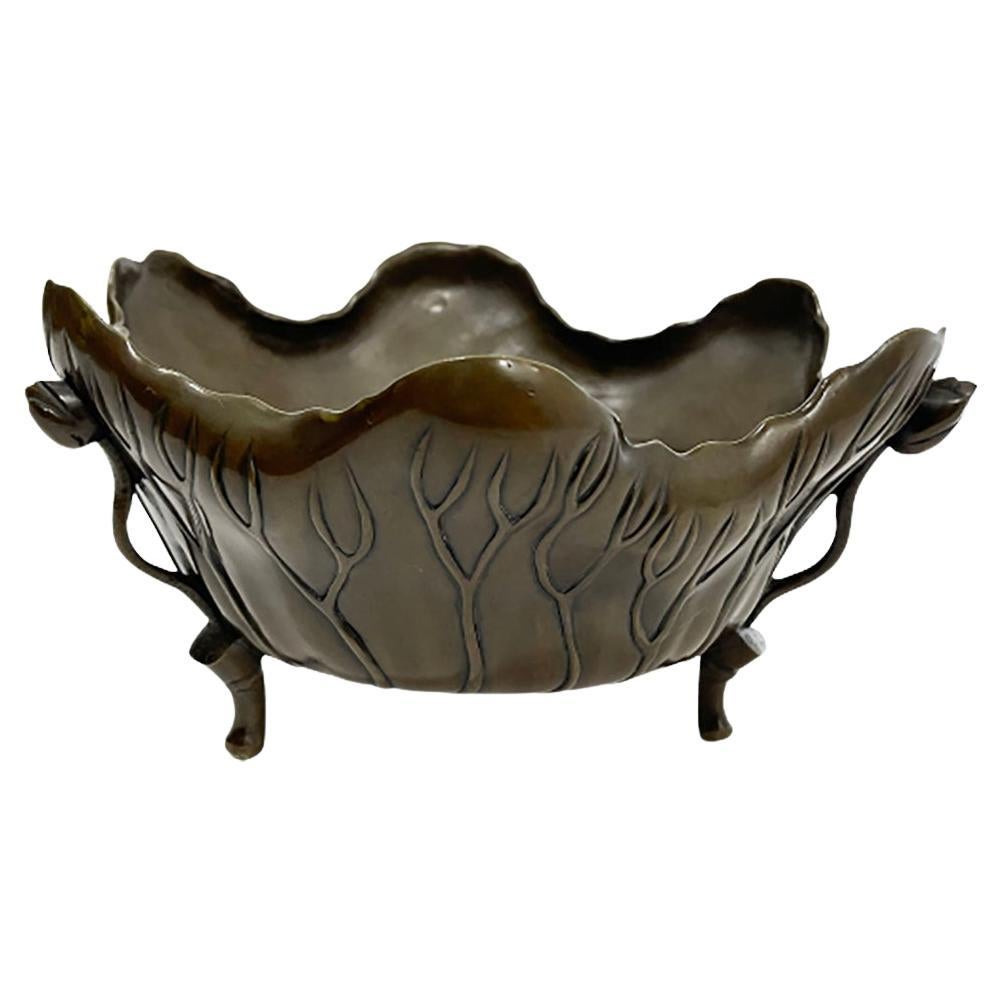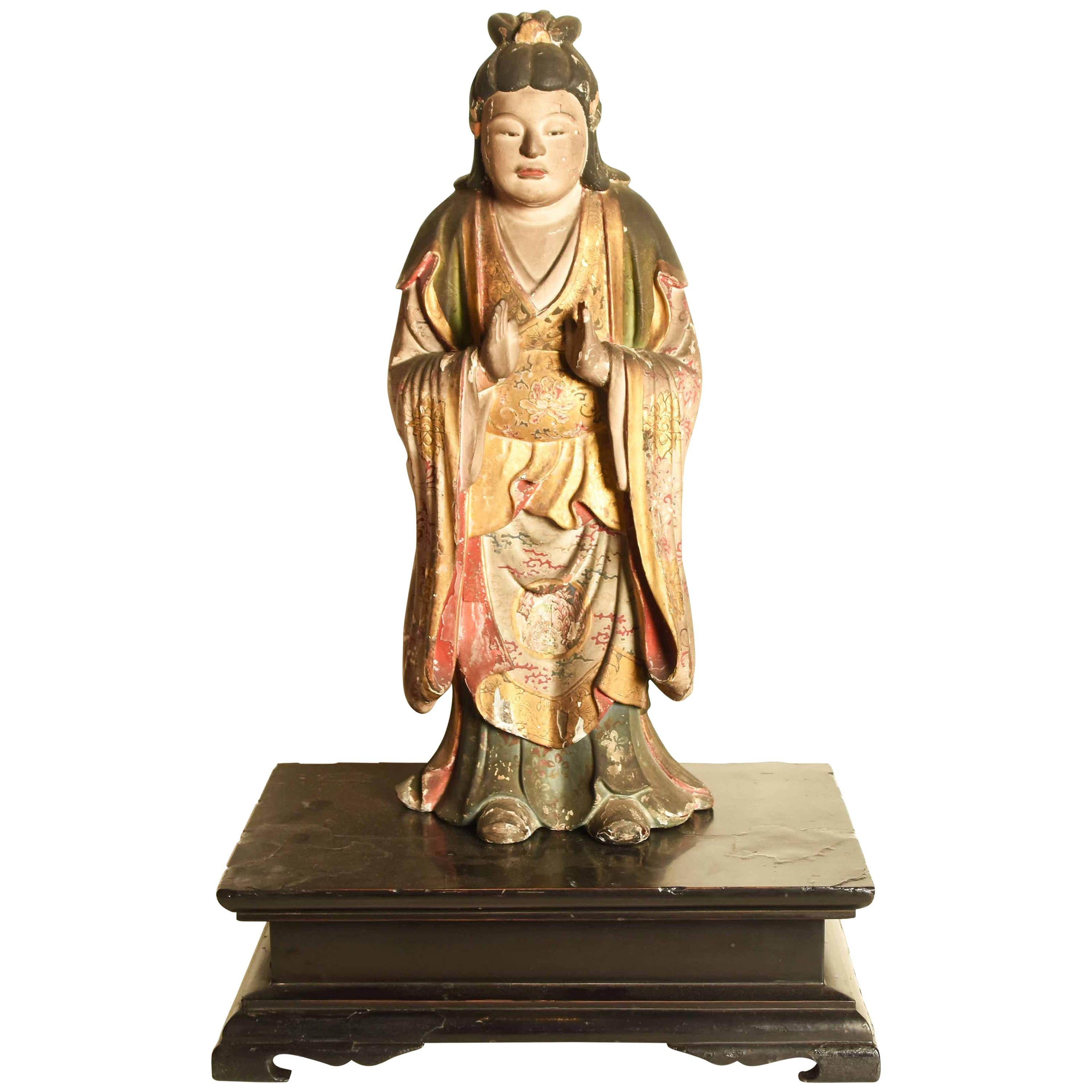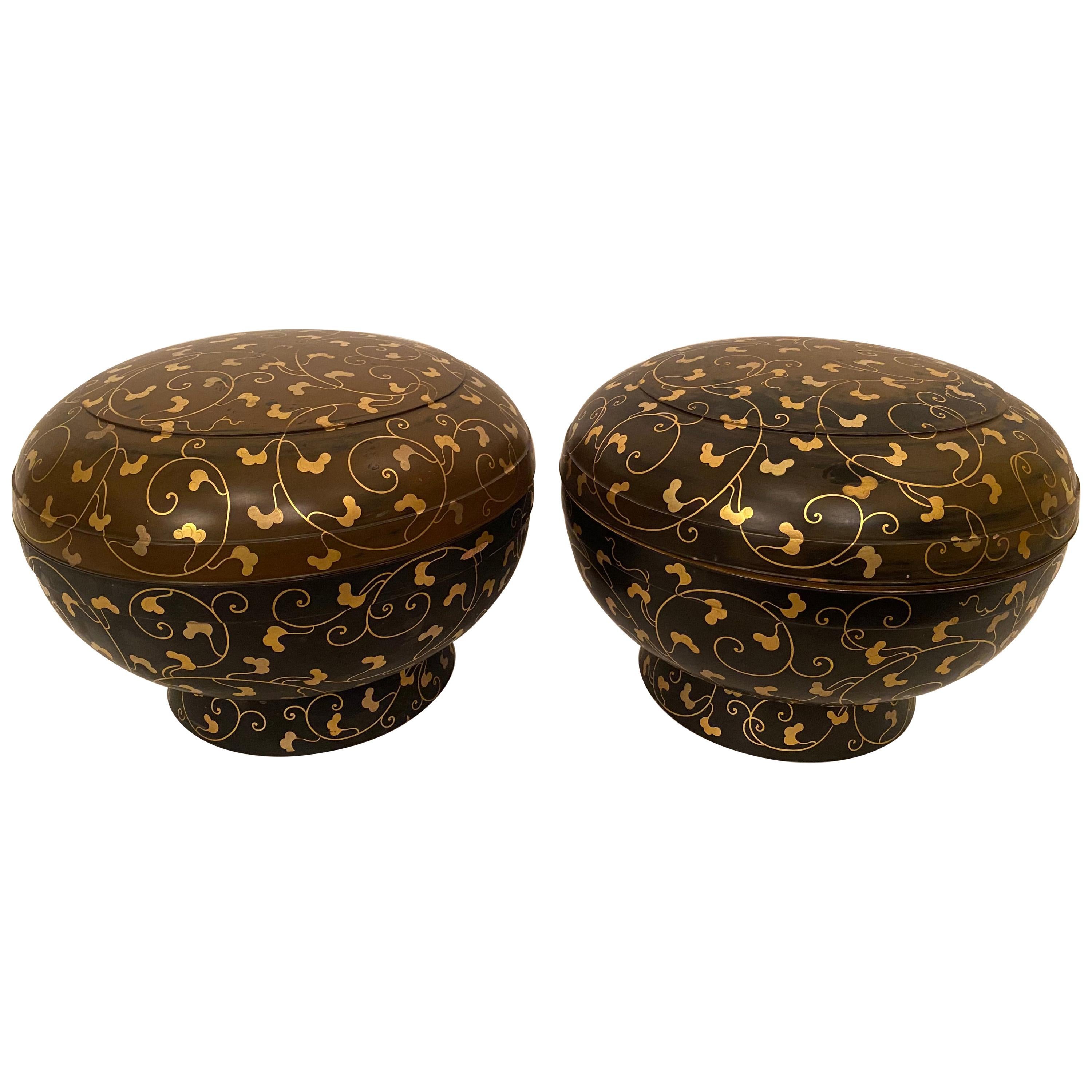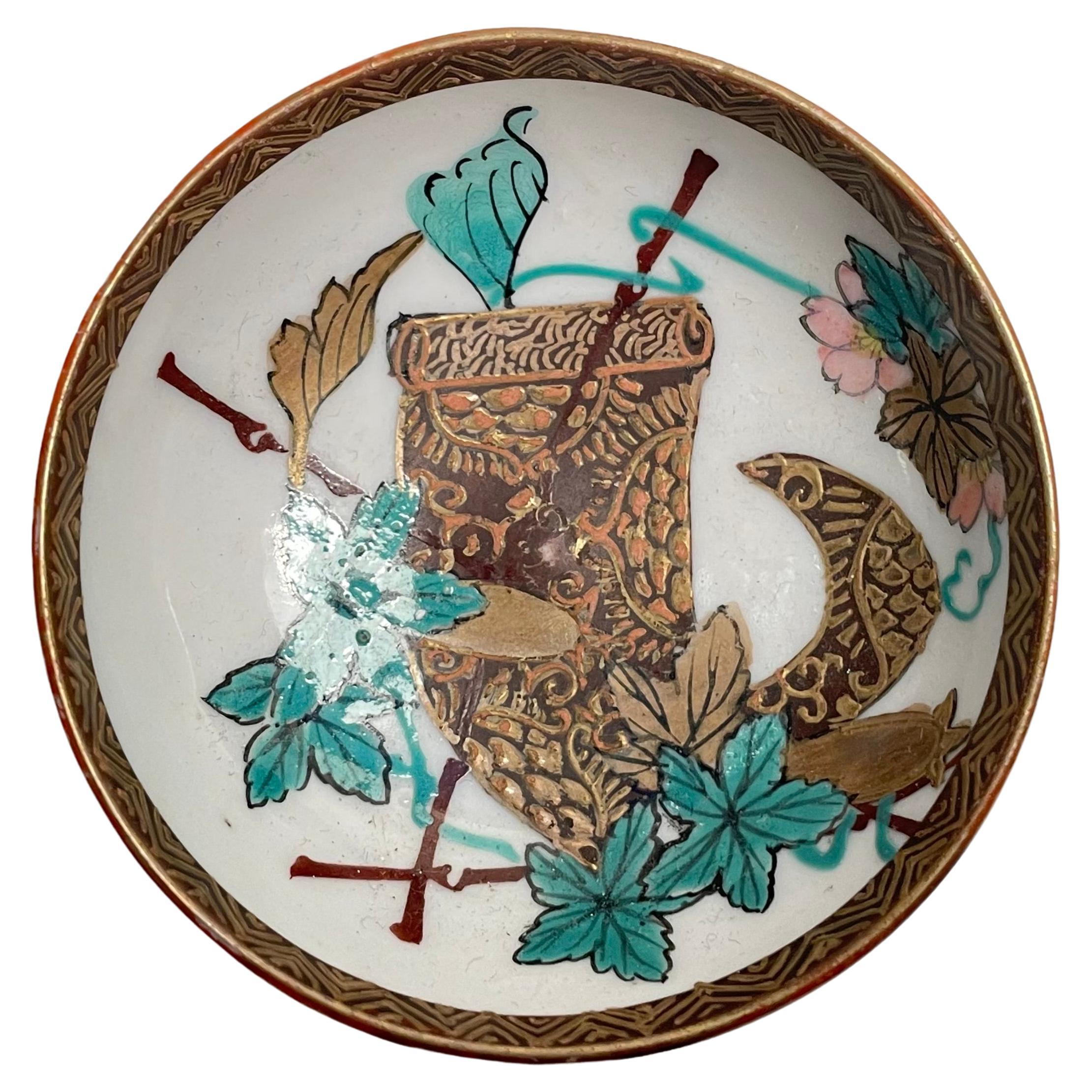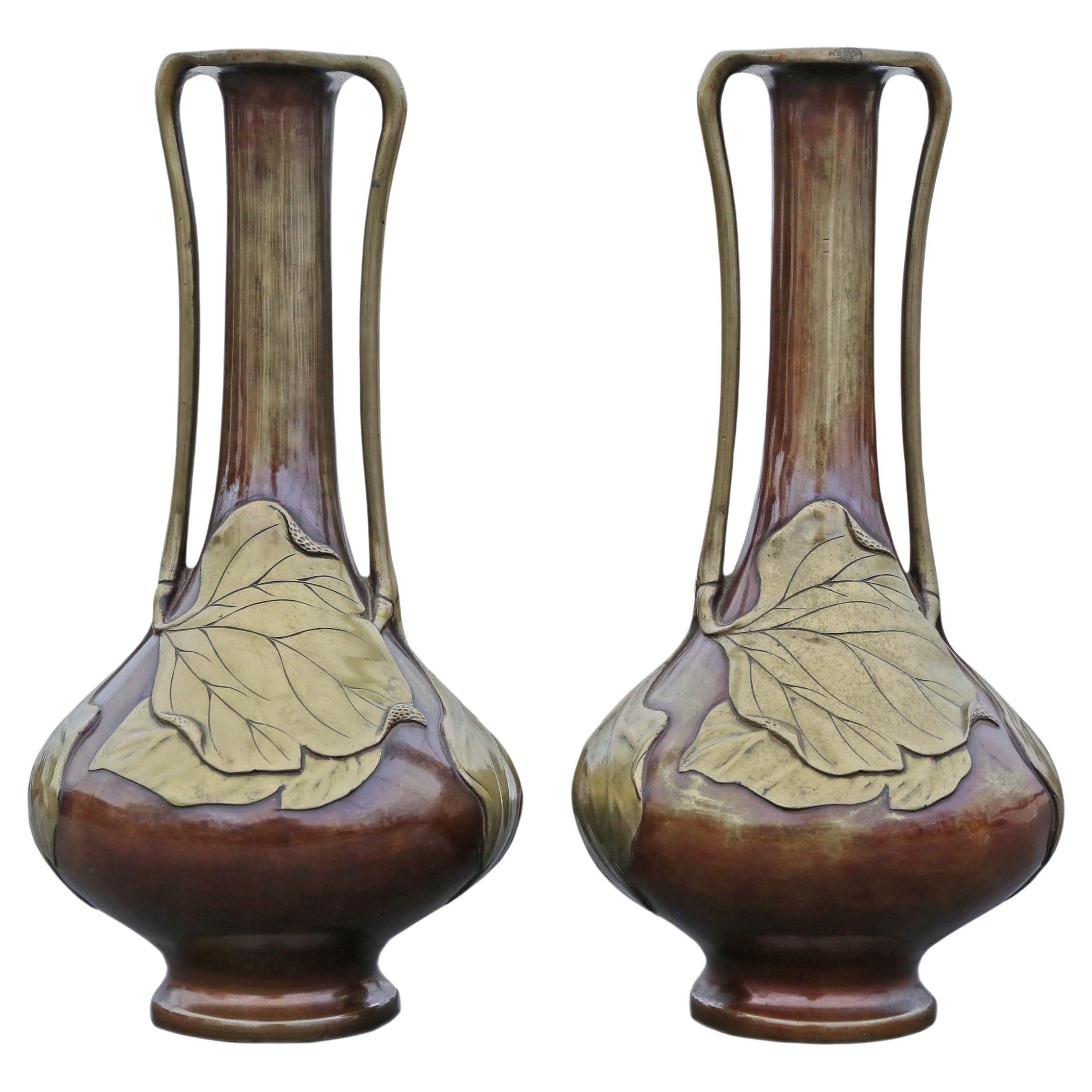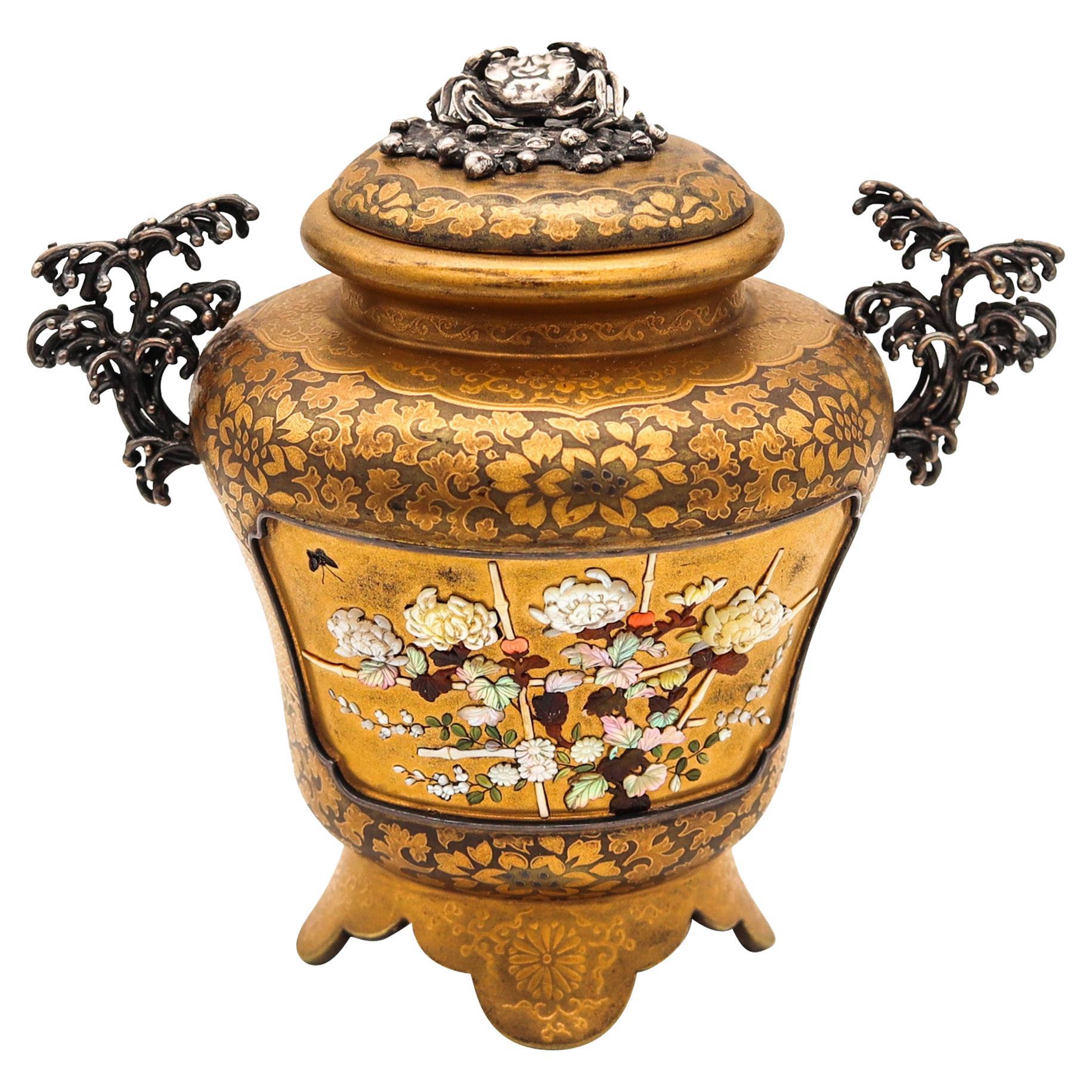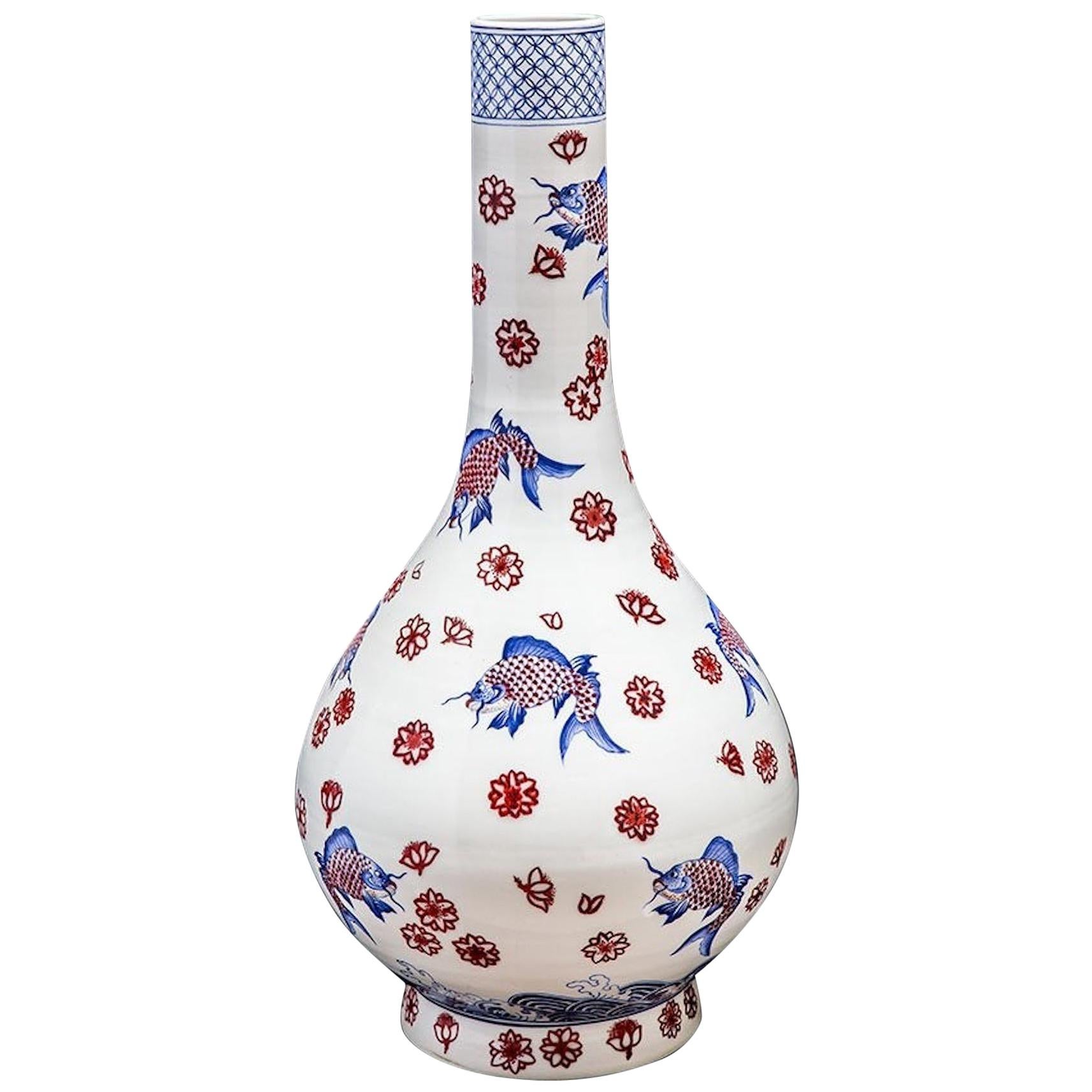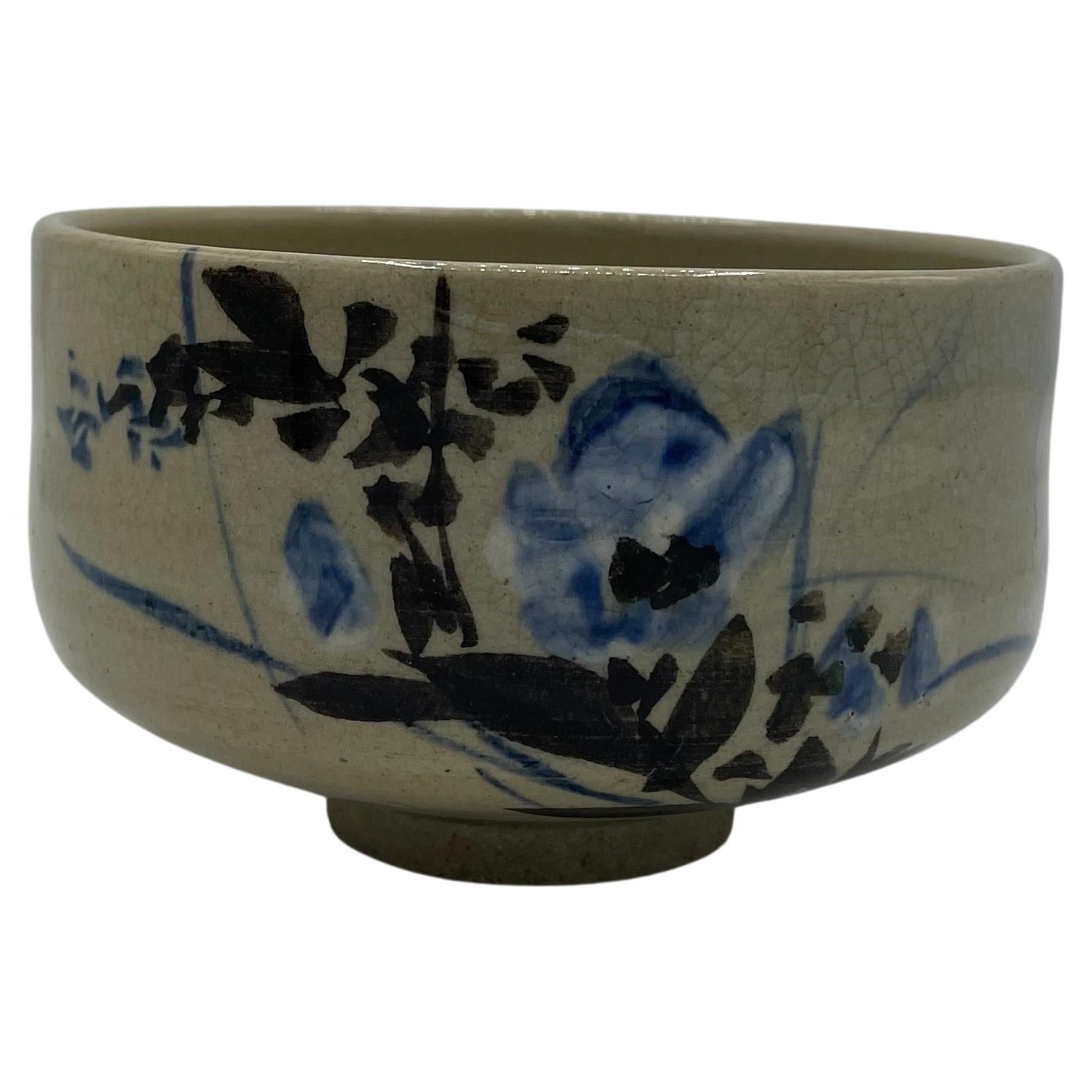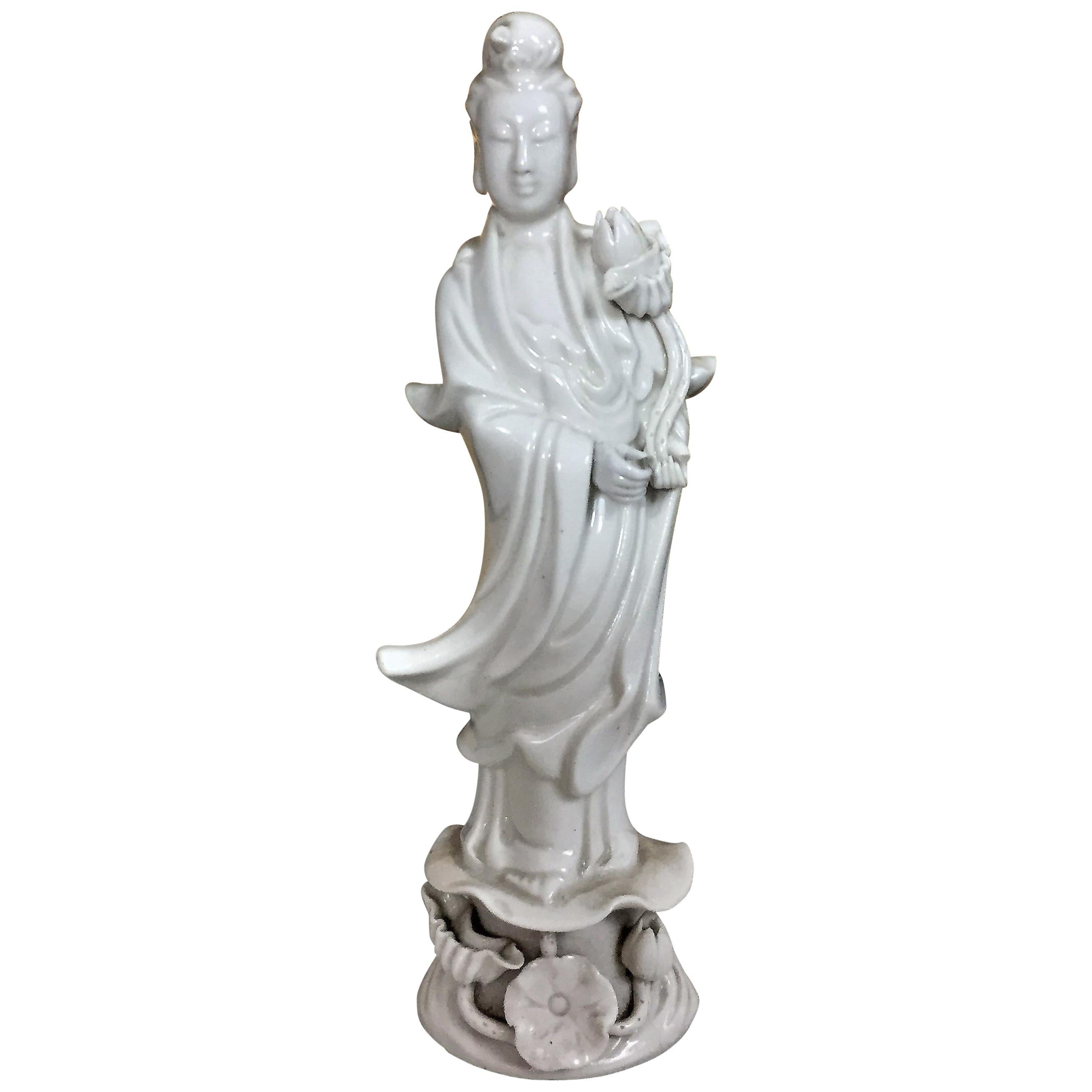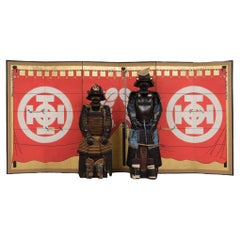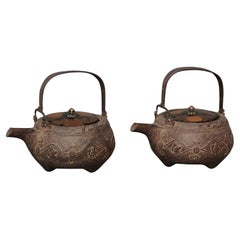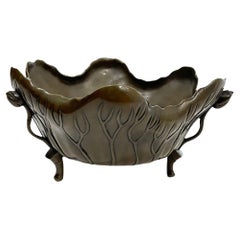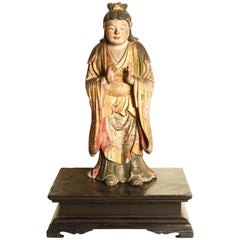
Large pair of Japanese ‘Jyôka’ 常花, sets of gilded lotus flowers and -leaves.
View Similar Items
Want more images or videos?
Request additional images or videos from the seller
1 of 17
Large pair of Japanese ‘Jyôka’ 常花, sets of gilded lotus flowers and -leaves.
About the Item
- Dimensions:Height: 39.77 in (101 cm)Width: 19.69 in (50 cm)Depth: 17.33 in (44 cm)
- Sold As:Set of 2
- Materials and Techniques:
- Place of Origin:
- Period:
- Date of Manufacture:Meiji period (1868-1912)
- Condition:Wear consistent with age and use. Minor losses. The flowers are in a very good original condition with some traces of wear conform age. The vases are in a good original condition with some small imperfections as a rim chip. Please look at the photos for a condition reference.
- Seller Location:Amsterdam, NL
- Reference Number:Seller: B32421stDibs: LU7165238184722
About the Seller
5.0
Vetted Seller
These experienced sellers undergo a comprehensive evaluation by our team of in-house experts.
Established in 1996
1stDibs seller since 2022
16 sales on 1stDibs
Typical response time: 8 hours
More From This SellerView All
- Rare set of 2 Japanese suits-of-armour, complete with 2 matching folding screensLocated in Amsterdam, NLImportant unique set of two suits-of-armour (yoroi), complete with two high six-panel screens, that belong together as is indicated by the used family crests (mon). Two crests are used, both belonging to the Nakagawa family of Oka Castle, Ôita prefecture on Kyûshû. They are: – the Nakagawa-kurusu, a circle depicting a Celtic-like cross through a ring. The cross was originally a Christian symbol but after the ban on Christianity in Japan the use of a hidden cross in family crests could continue. – the Nakagawa-kashiwa, two leaves of the Japanese Emperor Oak turned to each other (dakikashiwa mon). The remarkable aspect of this ensemble is the presence of matching crests on both the yoroi and the accompanying folding screens. The kurusu and kashiwa crests adorning the yoroi are elegantly replicated on the screens, providing compelling evidence that these pieces form a harmonious and unified set. This exceptional cohesion between the armour and screens further enhances their artistic and historical value. After the warlord Toyotomi Hideyoshi (1537-1598) had interfered in the battle between the Lord of Bungo Province Ôtomo Yoshi-mune (1558-1605) and the Shimazu of Hyûga Province, he split the Bungo Province in a number of small fiefs and transferred in 1594 Nakagawa Hideshige (1570-1612) from Miki Castle in the Harima Fief to Oka Castle in Kyûshû. The Nakagawa family stayed in possession of Oka Castle till the abolishment of the military use of castles in 1873. In 1884 the Nakagawa family received the title of Count (a title in use till the abolishment of aristocracy in 1947). After the Nakagawa’s left, the castle and the building soon dilapidated and is now known as Oka Castle Ruins. The castle is located in Taketa Village part of Taketa Town in Ôita Province on Kyûshû. > Set of two tall byôbu (folding screens), painted with large red jinmaku (camp enclosure curtain) on a gold leaf ground. The curtains show both crests of the Nakagawa family: one screen depicts two Nakagawa-kurusu crests next to a Nakagawa-kashi crest in the middle, and the other shows the symbols the other way round. Dimensions: Total width 148.66 in/377.6 cm (2 x 25.35 in/64.4 cm, 4 x 24.48 in/62.2 cm); Height 72.63 in/184.5 cm. Period: Japan – Late Edo period (First half 19th century), and maybe even older. > Yoroi with Nakagawa-kashiwa crest: A Japanese black lacquered suit-of-armour (yoroi) completely laced with orange cords (kuro’urushinuri hi’ito odoshi nimai’dô’maru). A thirty-two plate suji’bachi kabuto (helmet with raised ridges) with in front a maedate (fore crest) -with traces of gilding- in the shape of flames, resembling a mythical flaming bird flying down. The fukikaeshi (face guards) and the mabizashi (visor) have the Nakagawa-kashiwa crest in gold maki-e lacquer. Five curved ‘itazane’-plate neck guards (shikoro) laced with orange cords. Together with an ‘angry man...Category
Antique 18th Century Japanese Antiquities
MaterialsGold Leaf, Iron, Metal
- Pair of Japanese cast iron chôshi 銚子 (sake kettles) with lacquered lidsLocated in Amsterdam, NLPair of enticing cast iron chôshi (sake kettles) with a detailed lacquered lid, raised by three low feet. Its rotund body with a subtle embossed design of stylized symbols, like myth...Category
Antique Early 19th Century Japanese Antiquities
MaterialsSilver, Iron
- Japanese Edo-period gosho’ningyô 御所人形 (palace doll) of plump, seated childLocated in Amsterdam, NLA charming gosho’ningyô (palace doll) of plump, seated child with a brilliant white skin and a small delicately elegant face, reminiscent of a young noble. The doll is playfully rais...Category
Antique Early 19th Century Japanese Antiquities
MaterialsPaste, Silk, Paint
- Red lacquer Festival Flag Support abundantly inlaid with mother-of-pearl, JapanLocated in Amsterdam, NLRare museum-worthy Japanese lacquered wooden festival support for a flag. In feudal Japan this kind of supports sat on the back of a horse or ox during pr...Category
Antique 19th Century Japanese Antiquities
MaterialsMetal, Bronze, Copper
- Antique Japanese granite chôzu’bachi 手水鉢 (water basin) with carved Buddha designLocated in Amsterdam, NLExceptional, traditional Japanese granite chôzu’bachi (water basin) that is square of shape with on the top surface a cylindrical water pool and a carved design on each side of a Bud...Category
Antique 19th Century Japanese Antiquities
MaterialsGranite
- Signed Japanese Edo suji’bachi kabuto (helmet) with a moon & cloud maedateLocated in Amsterdam, NLAn antique, outstanding signed suji’bachi kabuto (helmet with ridges) surmounted by a gilt metal maedate (forecrest) shaped like a full moon emerging from the clouds heightened by a ...Category
Antique Early 19th Century Japanese Antiquities
MaterialsMetal, Iron
You May Also LikeView All
- Japanese Bronze Ikebana Lotus Footed BowlLocated in Delft, NLJapanese bronze Ikebana Lotus footed bowl A Japanese Meiji Period (1868-1912) footed bowl in the shape of a leaf with Lotus flowers raided o...Category
Antique Late 19th Century Japanese Antiquities
MaterialsBronze
- Antique Japanese Gilded Statue of a Shinto God, Momoyama PeriodLocated in Prahran, VictoriaA Japanese statue of a Shinto god from the Momoyama period. Hand carved from wood with a layer of gesso and hand painted flowing robes with delicately wroug...Category
Antique 16th Century Japanese Sculptures and Carvings
MaterialsGesso, Wood
- Pair of 14‘’ Large Japanese Golden Black Lacquer Cover BoxesLocated in Brea, CAA pair of large Japanese golden black lacquer cover boxes, very big beautiful pieces. possibly 19th century, each 14 inch diameter x 10 inch high, one ...Category
Antique Late 19th Century Japanese Meiji Antiquities
MaterialsLacquer
- Ancient Buddhist Stone Tabletop Altar with a Lotus FlowerLocated in Antwerp, BEAn exceptional and very early Buddhist stone altar equipped with two handgrips for moving it to the spot of the planned sacrifice. Carved by hand from a si...Category
Antique 15th Century and Earlier Asian Hellenistic Antiquities
MaterialsSchist
- Pair of Japanese Bronze VasesLocated in Beuzevillette, FRMeiji period pair of Japanese Bronze Vases Finely Cast with High Relief decoration figures of a 3 clawed Dragon and 2 striped tigers and bamboo on the...Category
Antique Early 19th Century Japanese Antiquities
MaterialsBrass
- Japanese Porcelain Sake Cup Ochoko Leaves 1960s Kutani wareLocated in Paris, FRThis is a small cup for drinking sake. It is called Ochoko in Japanese. It was made in showa era around 1960s. It is made with porcelain and all hand painted. This is Kutani ware. ...Category
Vintage 1960s Japanese Showa Antiquities
MaterialsPorcelain
Recently Viewed
View AllMore Ways To Browse
Large Flower Arrangement
Gilded Flowers
Gilded Leaves
Gilded Asian
Lotus Asian Art
Buddhist Temple
Lotus Leaves
Large Buddhist
Japanese Lacquer Set
Japanese Lotus
Antique Large Crates
Japanese Carved Flower
Pair Japanese Lacquer
Pair Of Japanese Lacquer
Lotus Flower Vase
Temple Japanese Buddhist
Lacquer Glasses Japan
Altar Flowers
